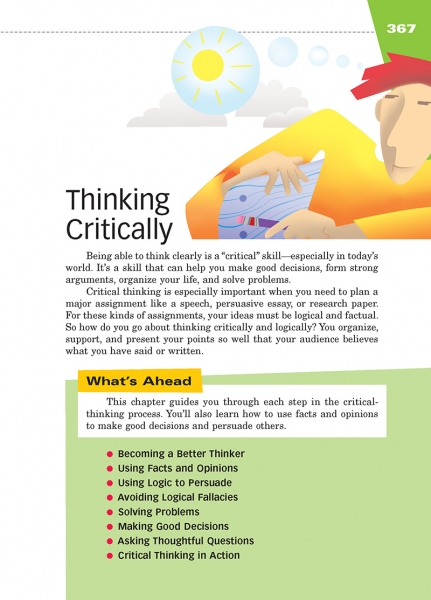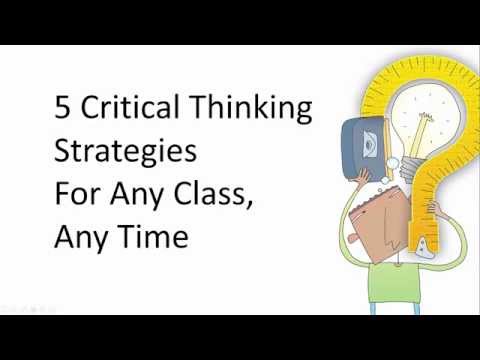Page 367 from

Start-Up Activity
Write the word "critical" on the board and ask students to offer definitions. List each as it is offered. Then show students these definitions of "critical":
-
Crucial or decisive: a critical decision
-
Vital or key: a critical habitat
-
Likely to criticize: a critical review
-
Using careful judgment or evaluation: a critical analysis
-
Sufficient to cause a chain reaction: a critical mass
Ask students what all of these definitions have in common. (All are important or key.) Ask which definition best fits the idea of critical thinking. (Definition 4) Then point out that even though Definition 4 most closely matches the kind of thinking they will study in this chapter, all of the definitions apply. Critical thinking is crucial, decisive, vital, key, likely to criticize, and sufficient to cause a chain reaction—as well as focusing on careful judgment and evaluation.
Think About It
“It's sort of a mental attitude about critical thinking and curiosity. It's about a mindset of looking at the world in a playful and curious and creative way.”
—Adam Savage

Start-Up Activity
Write the word "critical" on the board and ask students to offer definitions. List each as it is offered. Then show students these definitions of "critical":
-
Crucial or decisive: a critical decision
-
Vital or key: a critical habitat
-
Likely to criticize: a critical review
-
Using careful judgment or evaluation: a critical analysis
-
Sufficient to cause a chain reaction: a critical mass
Ask students what all of these definitions have in common. (All are important or key.) Ask which definition best fits the idea of critical thinking. (Definition 4) Then point out that even though Definition 4 most closely matches the kind of thinking they will study in this chapter, all of the definitions apply. Critical thinking is crucial, decisive, vital, key, likely to criticize, and sufficient to cause a chain reaction—as well as focusing on careful judgment and evaluation.
Think About It
“It's sort of a mental attitude about critical thinking and curiosity. It's about a mindset of looking at the world in a playful and curious and creative way.”
—Adam Savage

